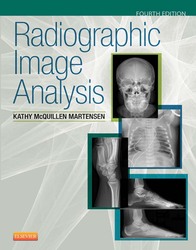Book Description
Learn to produce the most accurate radiographic images on the first try with Radiographic Image Analysis, 4th Edition. This thoroughly updated guide walks you through the steps of how to carefully evaluate an image, how to identify the improper positioning or technique that caused a poor image, and how to correct the problem. For each procedure, there is a diagnostic-quality radiograph along with several examples of unacceptable radiographs, a complete list of radiographic evaluation guidelines, and detailed discussions on how each of the evaluation points is related to positioning and technique. Each unacceptable radiograph is accompanied by a description of the misaligned anatomical structures, how the patient was mis-positioned, and how to adjust technique to obtain an acceptable radiograph.
"The whole text is well presented." Reviewed by Jenny May on behalf of Radiography, July 2015
- Poorly positioned example images appear at the end of procedures to test your knowledge.
- Spotlights concepts boxes highlight the most important information as it appears in the chapters and directs readers to more information on these topics.
- Chapter objectives, key terms, and outlines help in mastering important concepts and information.
- NEW! Expanded sections on pediatric, obesity, and trauma digital radiography provides the most pertinent and up-to-date information needed for clinical success.
- NEW! Reformatted content surrounding procedures includes the following to help you identify correctly and incorrectly positioned patients:
- accurately positioned projection with labeled anatomy
- photograph of an accurately positioned model
- table that provides a detailed one-to-one correlation between the positioning procedures and image analysis guidelines
- discussion, with correlating images, on identifying how the patient, central ray, or image receptor were poorly positioned if the projection does not demonstrate an image analysis guideline
- discussion of topics relating to positioning for patient condition variations and non-routine situations
- photographs of bones and models positioned as indicated to clarify information and demonstrate anatomy alignment when distortion makes it difficult
- practice images of the projection that demonstrate common procedural errors
- NEW! Two-color design helps you read and retain pertinent information.
- NEW! Updated boxed material summarizes important analysis details and provides a quick reference.
- NEW! Highlighted table data offers a new format to aid in the understanding of field size requirements using direct-capture digital radiography.


 (0 rating)
(0 rating) 





